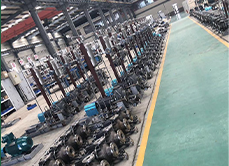English
- Afrikaans
- Albanian
- Amharic
- Arabic
- Armenian
- Azerbaijani
- Basque
- Belarusian
- Bengali
- Bosnian
- Bulgarian
- Catalan
- Cebuano
- Corsican
- Croatian
- Czech
- Danish
- Dutch
- English
- Esperanto
- Estonian
- Finnish
- French
- Frisian
- Galician
- Georgian
- German
- Greek
- Gujarati
- Haitian Creole
- hausa
- hawaiian
- Hebrew
- Hindi
- Miao
- Hungarian
- Icelandic
- igbo
- Indonesian
- irish
- Italian
- Japanese
- Javanese
- Kannada
- kazakh
- Khmer
- Rwandese
- Korean
- Kurdish
- Kyrgyz
- Lao
- Latin
- Latvian
- Lithuanian
- Luxembourgish
- Macedonian
- Malgashi
- Malay
- Malayalam
- Maltese
- Maori
- Marathi
- Mongolian
- Myanmar
- Nepali
- Norwegian
- Norwegian
- Occitan
- Pashto
- Persian
- Polish
- Portuguese
- Punjabi
- Romanian
- Russian
- Samoan
- Scottish Gaelic
- Serbian
- Sesotho
- Shona
- Sindhi
- Sinhala
- Slovak
- Slovenian
- Somali
- Spanish
- Sundanese
- Swahili
- Swedish
- Tagalog
- Tajik
- Tamil
- Tatar
- Telugu
- Thai
- Turkish
- Turkmen
- Ukrainian
- Urdu
- Uighur
- Uzbek
- Vietnamese
- Welsh
- Bantu
- Yiddish
- Yoruba
- Zulu
Telephone: +86 13120555503
Email: frank@cypump.com
Nov . 11, 2024 23:44 Back to list
mixed flow pump
Understanding Mixed Flow Pumps An Overview
Mixed flow pumps are a unique category of centrifugal pumps that combine the characteristics of both axial and radial flow designs. These pumps are widely used in various industries, including water treatment, irrigation, and various manufacturing processes, due to their efficiency and versatility in handling a wide range of fluids.
Basic Working Principle
A mixed flow pump operates by moving fluid through the impeller, which generates a flow that combines both axial (parallel to the pump shaft) and radial (perpendicular to the pump shaft) components. The impeller consists of blades that redirect the fluid from the inlet of the pump to the discharge point. This design allows the pump to maintain relatively high flow rates while producing moderate pressure, making it ideal for applications that require both attributes.
The mixed flow pump typically operates at lower rotational speeds than radial flow pumps, which enhances its efficiency concerning energy consumption. This is a significant advantage in applications where large volumes of fluid need to be moved without excessive energy loss.
Key Applications
Mixed flow pumps are particularly suited for applications where high flow rates are essential. They are commonly used in
1. Water Supply and Wastewater Treatment These pumps play a crucial role in municipal water systems, helping to transport water from sources to treatment facilities and through distribution networks. In wastewater treatment plants, mixed flow pumps are employed to move effluent for further processing and treatment.
2. Irrigation Systems Agriculture extensively utilizes mixed flow pumps for irrigation. They can efficiently deliver water to crops, ensuring optimal growth and productivity. Their ability to handle varying flow rates makes them suitable for diverse irrigation needs.
3. Industrial Processes In manufacturing, mixed flow pumps are favored for their ability to handle process fluids, slurries, and chemicals in a controlled manner. Their reliability and adaptability are essential in maintaining consistent production standards.
mixed flow pump

4. Fire Protection Systems In fire safety applications, mixed flow pumps provide the necessary water flow at required pressures to extinguish fires effectively. Their robustness and quick responsiveness are critical in emergencies.
Advantages of Mixed Flow Pumps
Mixed flow pumps offer several benefits that make them a competitive choice in many applications
- Versatility They can handle a wide range of fluids, including those that contain solids or are viscous. This makes them a go-to option in industries that deal with diverse substances.
- High Efficiency The design of mixed flow pumps allows them to operate efficiently across a range of flow conditions, which contributes to reduced energy consumption and lower operational costs.
- Compact Design Compared to other pump types, mixed flow pumps often have a more compact footprint, making them easier to install in confined spaces.
- Reduced Noise Levels Mixed flow pumps generally operate more quietly than their radial counterparts, contributing to a better working environment, particularly in industrial settings.
Conclusion
In summary, mixed flow pumps represent a crucial technology in fluid handling across many domains. Their unique design integrating axial and radial flow characteristics allows for efficient movement of fluids at varying pressures and flow rates. As industries continue to evolve and demand higher efficiency standards, mixed flow pumps will undoubtedly remain a vital component of modern fluid management solutions. As technological advancements continue to emerge, we can expect the efficiency and reliability of these pumps to improve further, making them even more integral to various applications in the future.
-
ISG Series Vertical Pipeline Pump - Chi Yuan Pumps | Advanced Engineering&Industrial Efficiency
NewsJul.30,2025
-
ISG Series Pipeline Pump - Chi Yuan Pumps | High Efficiency, Energy Saving
NewsJul.30,2025
-
ISG Series Vertical Pipeline Pump-Chi Yuan Pumps|High Efficiency&Reliable Performance
NewsJul.29,2025
-
ISG Series Vertical Pipeline Pump|High Efficiency&Low Noise
NewsJul.29,2025
-
ISG Series Vertical Pipeline Pump - Chi Yuan Pumps Co., LTD.|High Efficiency, Energy Conservation, Low Noise
NewsJul.29,2025
-
ISG Series Vertical Pipeline Pump-Chi Yuan Pumps Co., LTD.|High Efficiency&Energy-Saving
NewsJul.29,2025










